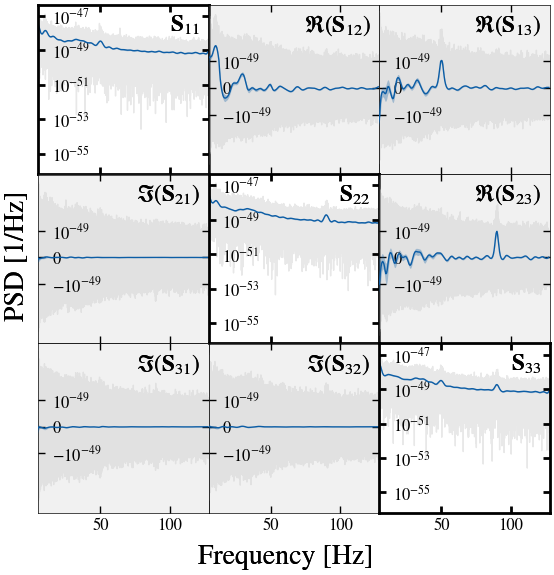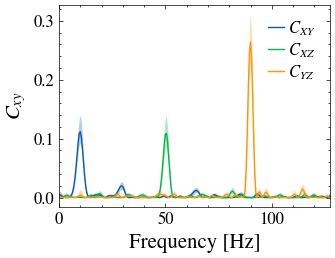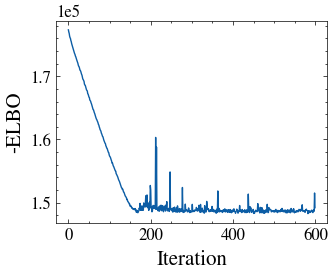ET Example#
Here we have an example of how to use this package to estimate a PSD from ET data. The data is a small subset of the ET data used in the paper for this work.
! pip install sgvb_psd -q
import time
import h5py
import os
import matplotlib.pyplot as plt
import numpy as np
from sgvb_psd.psd_estimator import PSDEstimator
import urllib.request
def load_et_data() -> np.ndarray:
"""
Return (n_samples, 3) array of XYZ channels
"""
fname = "et_data.h5"
# Download the data if it does not exist
if not os.path.exists(fname):
urllib.request.urlretrieve(
"https://github.com/nz-gravity/sgvb_psd/raw/main/docs/examples/et_data.h5",
fname
)
with h5py.File("et_data.h5", "r") as f:
channels = np.column_stack([
f["X"][:],
f["Y"][:],
f["Z"][:]
])
return channels
data = load_et_data()
N_theta = 400
start_time = time.time()
optim = PSDEstimator(
x=data,
N_theta=N_theta,
nchunks=128,
fs=2048,
ntrain_map=1000,
fmax_for_analysis=128,
degree_fluctuate=N_theta,
seed=0,
)
optim.run(lr=0.003) # remove lr to run-hyperoptimisation (takes a long time)
end_time = time.time()
estimation_time = end_time - start_time
print(f'The estimation time is {estimation_time:.2f}s')
optim.plot_coherence(labels='XYZ')
plt.savefig("ET_coherence.png")
plt.close()
optim.plot(xlims=[5, 128], labels='XYZ')
plt.savefig("ET_psd.png")
plt.close()
optim.plot_vi_losses()
plt.savefig("ET_vi_losses.png")
plt.close()
|
|
|




